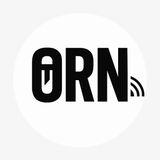From Haymarket to Occupy: The Unfinished Revolt of Labor and Democracy
Echoes in the Streets
History rarely advances in a straight line. It lurches forward, stalls, and then rises again when people refuse to accept indignity. Chicago’s Haymarket Square in 1886, when workers demanded an eight-hour day, was not the first rebellion and would not be the last. The Pullman Strike of 1894, where thousands of rail workers resisted wage cuts and debt in a company town, was not an anomaly either.
Across generations, uprisings erupt when people recognize that political democracy without economic democracy is hollow. From 1848’s barricades in Europe to the coalfields of West Virginia in 1921, from the March on Washington in 1963 to Occupy Wall Street in 2011, and the fragmented but defiant protests of 2015 — each moment carries forward the same struggle.
These are not disconnected episodes. They are part of a long arc of resistance, where workers, students, and ordinary people challenge systems that treat them as expendable. Each revolt is beaten back, but each leaves behind something permanent: a demand, a slogan, a possibility that becomes seed for the next fight.
Today’s gig economy and algorithmic bosses may look like innovation. In reality, they are a new version of Pullman’s company town — shifting costs to workers, denying rights, and keeping people indebted. And just like in the past, workers are finding ways to resist.
This is the unfinished revolt of labor and democracy: carried by each generation, shaped by different circumstances, but always demanding the same thing — dignity.
Part I – 1848: The Springtime of Nations
In 1848, Europe caught fire. From Paris to Berlin, Vienna to Milan, revolts erupted against monarchies and aristocratic privilege. Workers, artisans, and students built barricades in the streets. Their demands were simple but radical: universal suffrage, free press, labor rights, and social reforms that would give ordinary people a stake in democracy.
Though most of these revolutions were crushed, the uprisings revealed a new truth — ordinary people could shake empires. In France, the monarchy fell. In Germany and Austria, demands for constitutions forced concessions, even if short-lived. The revolutions failed politically, but they transformed consciousness.
Why does this matter for the United States? Because ideas travel with people. German immigrants fleeing the failed revolutions of 1848 carried their radical politics to America. Many settled in Chicago, bringing the seeds of socialism, anarchism, and labor radicalism. By the 1880s, these ideas fused with America’s growing industrial working class. When workers gathered in Chicago’s Haymarket Square to demand an eight-hour day, the banners and speeches bore the clear influence of 1848’s ideals.
In other words, Haymarket did not appear from nowhere. It was the American echo of a global cycle. And the same is true today: just as immigrant workers in the 19th century carried new visions of labor, today’s global gig workers — from delivery drivers in California to platform workers in Spain or India — are shaping a transnational struggle. The dream of 1848, that democracy must mean more than a vote, remains unfinished.
Part II – 1921: Rebellion in the Coalfields
The end of World War I brought turmoil to the United States. Inflation soared, wages stagnated, and corporations slashed labor rights they had tolerated during wartime. In 1919 alone, more than four million workers went on strike, from steel mills to shipyards. The ruling class panicked, denouncing strikes as “Bolshevik plots” in the first Red Scare.
Nowhere was this conflict sharper than in West Virginia’s coal country. Miners worked grueling hours underground, paid in company scrip redeemable only at overpriced company stores. They lived in company-owned housing, under the watchful eyes of armed guards. When they organized for union recognition, they faced violent repression.
In August 1921, tensions exploded into the Battle of Blair Mountain, the largest labor uprising in American history. Nearly 10,000 miners, many wearing red bandanas that gave birth to the term “redneck,” marched toward Logan County to confront coal operators and their private armies. Machine guns rattled from hilltops. The federal government deployed troops and even military planes. Dozens were killed, hundreds arrested.
The miners were defeated militarily, but their revolt reverberated nationwide. It exposed the brutality of corporate power and inspired labor solidarity in other industries. The red bandana became a symbol of working-class defiance.
The parallels to today are striking. Gig workers may not carry rifles, but they face algorithmic surveillance, unilateral pay cuts, and the threat of “deactivation.” When Amazon workers in Alabama tried to unionize in 2021, the company saturated the town with anti-union propaganda, pressured workers daily, and manipulated voting rules. The tactics were less bloody but no less coercive.
The lesson of 1921 is clear: when workers demand dignity, capital calls in every available force — private, corporate, or governmental — to put them down. Yet even defeat leaves behind a language of resistance that can’t be erased.
Part III – 1963: Jobs and Freedom
Ask most Americans about the March on Washington, and they recall Dr. Martin Luther King Jr.’s “I Have a Dream” speech. What is less remembered is its full name: the March on Washington for Jobs and Freedom.
King did not come to Washington alone. He was joined by A. Philip Randolph, leader of the Brotherhood of Sleeping Car Porters — a union of Black Pullman workers who fought for decades against the very company town tyranny that sparked the 1894 strike. The civil rights movement and the labor movement met on the steps of the Lincoln Memorial.
The march demanded not just civil rights but also fair wages, jobs, and union rights. King made the connection explicit: racial justice without economic justice was incomplete. The fight against Jim Crow was inseparable from the fight against economic exploitation.
This link carried forward into 1968, when sanitation workers in Memphis struck for dignity and union recognition. Their placards read simply: “I AM A MAN.” King went to Memphis to support them, where he was assassinated.
The lesson of 1963 is the same as 1886 and 1921: democracy without economic equality is a hollow promise. Today, when fast-food workers demand $15 an hour and Amazon warehouse workers demand union recognition, they echo the same principle — freedom is meaningless without dignity at work.
Part IV – 2011: Occupy Wall Street
On September 17, 2011, a small group of activists pitched tents in New York’s Zuccotti Park. Their target was not a monarch or a coal baron, but Wall Street itself. Their slogan was simple: “We are the 99%.”
Occupy Wall Street spread rapidly, with encampments in cities across the U.S. and worldwide. It captured a generation’s anger after the Great Recession: banks were bailed out, homeowners foreclosed, students buried in debt, while unemployment soared.
Critics called Occupy leaderless, diffuse, and naïve. But its legacy was profound. It reintroduced inequality into the national conversation. It gave us the language of the 99% versus the 1%, a framework now used in campaigns from Bernie Sanders to debt cancellation movements.
Occupy’s tents were cleared, but its slogans endured. Student debt strikes, housing rights campaigns, and strikes at Amazon and Starbucks all trace their roots back to Occupy’s insistence that the system is rigged.
The irony is sharp: even as Occupy challenged finance capital, new giants of the gig economy were rising. Uber, founded in 2009, scaled rapidly in the same years. The financialization of daily life and the platformization of labor grew side by side. The unfinished business of Occupy is the same as Haymarket: how to translate anger into lasting institutions that can shift power.
Part V – 2015: Fragmented but Connected
By 2015, resistance had become a constant rhythm. In Ferguson and beyond, Black Lives Matter grew from a hashtag into a national movement, challenging not only police violence but also systemic economic racism.
That same year, workers at McDonald’s and other chains continued the Fight for $15, striking in cities across the country. For many, it was the first strike they had ever participated in. Critics dismissed them as “unskilled,” echoing the disdain Pullman had for his workers. But their demand for a living wage reshaped the political landscape, winning victories in cities and states nationwide.
Globally, anti-austerity protests in Greece and climate justice uprisings revealed a world unwilling to accept “business as usual.” From Standing Rock to Paris, ordinary people connected survival to resistance.
These revolts were fragmented, lacking a single movement like 1930s labor unions or 1960s civil rights. Yet the themes were consistent: dignity, survival, fairness. Each uprising was a reminder that discontent may be suppressed, but it never disappears.
Part VI – Today’s Pullman Logic
The logic of Pullman never left. Today’s gig economy is its digital heir. Instead of company towns, workers are bound by apps. Instead of scrip, they are paid through debit cards and instant cash-outs with fees. Instead of rent deducted from wages, costs are shifted to workers: cars, gas, insurance, equipment.
Visa, Mastercard, and Amex serve as the new company stores, taking a cut of every transaction. Student loans and credit card debt function as chains, keeping workers compliant. Platforms claim workers are “independent contractors,” while dictating every aspect of their labor.
This is not innovation; it is regression. And just as in 1886, 1921, 1963, and 2011, workers are resisting. Gig workers strike. Amazon warehouses organize. Delivery drivers build grassroots unions.
History’s lesson is not that revolt guarantees victory. It is that revolt is inevitable when dignity is denied.
The Unfinished Revolt
From the barricades of 1848 to the coalfields of 1921, from the Lincoln Memorial in 1963 to Zuccotti Park in 2011, from fast-food picket lines in 2015 to Amazon warehouses today — the same struggle echoes.
Haymarket gave us May Day. Pullman gave us Labor Day. Occupy gave us the 99%. None achieved all they dreamed, but each left behind a seed.
Our generation inherits their unfinished work. The question is not whether there will be another revolt. The question is whether this time, we can build lasting structures that turn revolt into transformation.
History tells us one thing: when workers move, the world shifts.

